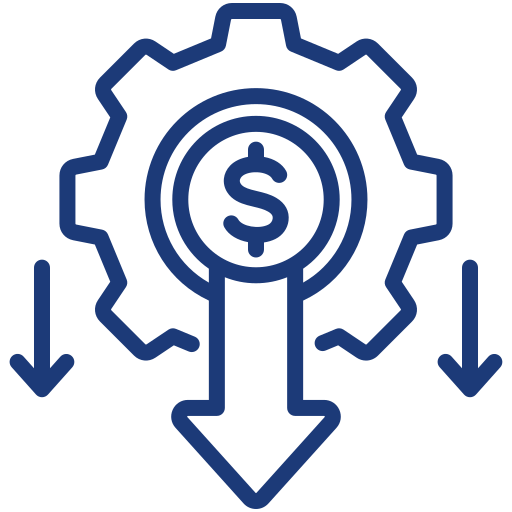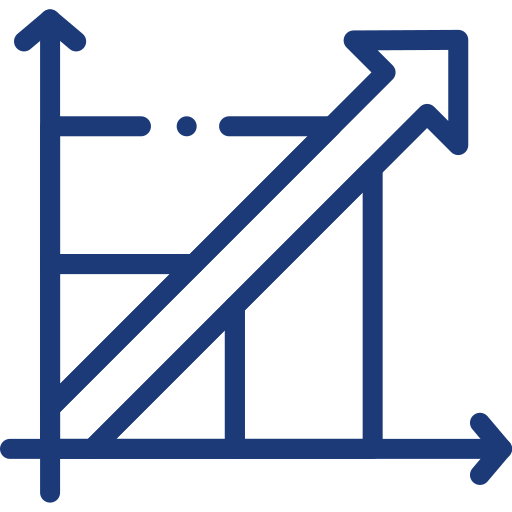RPA for Banking:Transform Banking Operations with Automation
Transform Operations, Boost Efficiency & Compliance
The banking industry faces numerous challenges, including managing large volumes of transactions, maintaining compliance with ever-changing regulations, and providing exceptional customer service. As digital banking grows, customers want faster and better services. Robotic Process Automation (RPA) alongside AI provides a powerful solution.
RPA for banking automates repetitive, manual tasks, streamlining operations, reducing errors, and enabling banks to focus on more strategic activities. By adopting RPA, financial institutions can improve efficiency, cut costs, and enhance customer experiences.

Efficiency Gains
RPA combined with AI helps banking institutions automate routine tasks like loan applications processing, mortgage collateral assessment, KYC procedures, data entry, customer account management, report generation, and transaction reconciliation. By automating these processes, banks can speed up operations, reduce human error, and let staff focus on more complex and strategic tasks.

Cost Reduction
Automating manual processes with RPA leads to significant cost savings. RPA reduces the need for manual labor, therefore minimizing error-related expenses and decreasing operational overhead. RPA’s efficiency can lower costs in various areas, from loan processing to customer support.

Improved Accuracy and Compliance
In the highly regulated banking sector, RPA ensures greater accuracy. It deals with tasks like compliance reporting, transaction monitoring, and fraud detection. By automating these processes, banks can minimize the risk of human error and ensure strict adherence to regulatory standards.

Scalability and Flexibility
RPA solutions for banking are highly scalable. As banks grow and face increased transaction volumes, RPA can easily handle the expansion. Internal CoE has become a standard for the majority of large and midsize banks. RPA and GenAI helps banks meet new needs and workloads without extra resources or significant process changes.
Use Cases of RPA for Banking
RPA and GenAI are highly effective for automating core processes of the banks such as loan or mortgage application processing. The middle office of banks has operational units responsible for review of loan or mortgage applications, scoring and making final decisions. As part of the application review, employees are spending 15-30 mins on checking completeness and correctness of the scanned documents (national ID, business plan, income statement, collateral documents etc.) by reviewing them and reconciling.
Use of VLMs (Visual Language Model), RPA and OCR (Optical Character Recognition) or IDP (Intelligent Document Processing) technology became a standard for automating documents recognition and data retrieval. Prompts written in natural language help to retrieve text, while traditional OCR is used for extraction of digits. This combined approach increases accuracy significantly.
Retrieved data is then used by RPA to fill in forms in the banking systems to move the application to the next phase. By automating these processes, banks can shorten loan provision cycles by 3 times and provide faster service to customers.
RPA is highly effective for automating manual processes like account opening, inactive accounts closing with prior notification.
Many banks require customers to fill in and sign paper forms for bank account opening as well as сonsent for the processing of personal data. These documents are then scanned and sent for review to employees in the operation department for review and approval. Review and approval might take up to 2 business days until the bank account is being provided.
VLMs, OCR and RPA technologies are used to automate these manual tasks in order to make sure that accounts are being opened within hours.
When it comes to inactive bank accounts, RPA is used to send prior notifications across different communication channels (SMS, email, phone call). If the account is still inactive after a period of time RPA bot closes the account in the core banking system.
Many third party payment system providers don’t provide access to API because of security concerns (providers like VISA, Mastercard, UnionPay etc.). Banking employees are forced to use credentials to access invoices via the provider’s portal to get the data and then reconcile it with data in the core banking system.
Depending on the bank the procedure might be executed every day or every month. Although it might only require 1-5 manhours to complete the reconciliation, risks of manual error are high enough for banks. Therefore RPA is best fit as an automation tool. RPA doesn’t require API and could use the user interface of the portals for data retrieval and then perform automatic reconciliation using excel, txt or CSV files, adding efficiency and making sure employees are not burning out because of routine.
Every day bank employees have to perform bank day closing and opening procedures. Some of the banks have the procedure being performed manually.
RPA bots are used to automate the process with following tasks being done: launching bank closing procedures in the core banking system, payment system and reconciling generated reports, launching bank day opening procedure in the core banking system, payment system . If everything works well the robot sends notification to the manager or if an error occurs the robot notifies the admin and manager via phone call, chat and email.
RPA and VLMs are used to automate review and approval of cross-border payments in foreign currencies made between counterparties. Using VLMs and OCR/IDP, the robot reads information from customer applications that could be either digital or in a paper. Then the robot checks the contract terms between the counterparties and checks if currency, payment amount, reference information, payment codes etc.are filled in the application in line with the contract. If all the details are correct, the robot approves the transaction in the system, otherwise the payment is being declined with comments from the robot.
Banking RPA can streamline data handling, ensuring that information is accurately collected, updated, and stored across multiple systems. This intelligent automation helps banks maintain accurate customer records and generate actionable insights for better decision-making.
Compliance with financial regulations is a major concern for banks. RPA helps streamline the collection and submission of regulatory data, ensuring timely and accurate reporting. By automating these processes, banks can stay ahead of compliance requirements without worrying about human errors.
RPA Implementation Process for Banking
01
Initial Consultation and Process Assessment
The first step in implementing RPA for banking is a detailed consultation. Our experts assess the bank’s existing processes. We identify areas that can benefit from automation, ensuring that the chosen solutions align with business objectives.
02
Custom Automation Design
Next, we design a tailored RPA solution that fits the unique requirements of the banking sector. Whether it’s for loan processing or fraud detection, the automation is designed to integrate seamlessly with existing systems and processes.
03
Deployment and Integration
Once the RPA solution is developed, we move on to deployment and integration. Our team ensures the smooth implementation of RPA tools within the bank’s IT infrastructure. We help to minimize disruption and maximize productivity from day one.
04
Continuous Monitoring and Optimization
RPA solutions require continuous monitoring to ensure optimal performance. We provide ongoing support to fine-tune automation processes. Our mission is to ensure the system adapts to changing business needs and regulatory requirements.
Get Started with RPA for Banking Today
RPA can transform your banking operations by streamlining processes, reducing costs, and improving customer satisfaction. Contact us today to learn how we can help automate your banking systems and bring your operations to the next level
Our selected banking projects
We empower leading international companies to operate with x10 efficiency
FAQs
RPA can automate tasks such as account opening, loan origination, KYC (Know Your Customer) checks, fraud detection, transaction reconciliation, regulatory reporting, and customer support. For instance, RPA can automate the extraction and checking of customer data when opening accounts. This reduces processing time and human error.
RPA ensures accurate and timely compliance reporting by automating data collection, processing, and report generation. It helps meet rules like GDPR, KYC, and AML. It does this by applying rules consistently. It also keeps a full audit trail for all automated activities. This reduces human errors and lowers compliance risks.
RPA can save banks by reducing manual labor costs and improving operational efficiency. For example, it can automate simple tasks like handling customer applications and making reports. This lets employees focus on more important work. Additionally, errors in transactions or compliance reports that may lead to penalties or rework are minimized, further saving costs.
Full RPA implementation typically takes between 6-12 weeks. The timeline includes process assessment, solution design, integration with core banking systems, and testing. Simpler tasks can be automated more quickly. Complex workflows, like loan origination, may take longer to configure.What our customers say
It was a great decision to get PythonRPA as a partner in our first ever RPA implementation within the organization. Apart from all the available features of their platform, I greatly appreciate the flexibility of the PythonRPA team to accommodate complex internal requirements from our information security and IT architects. Having all these pieces in place, we were able to successfully kick off RPA technology and create grounds for further scaling its benefits across multiple departments.

Sr. Transformation Lead, Home Credit Philippines.

“Immediately after the first bots appeared, department employees began to wonder why they had been doing this routine work for so long and not developing a business.”

Otbasy Bank

“I have worked with Python RPA for many years and have achieved outstanding results. We have automated business tasks across nearly all departments of our large company and are extremely satisfied with the speed and quality of automation it provides.”

RPA Business Analyst

“Advantages of the Python RPA platform helped speed up robot development by four times. It’s a pleasure to work with a high-quality domestic product. “

Head of IT department BI Innovations

“Python RPA enables us to automate our processes swiftly and efficiently, ensuring top-quality service for our customers”

Head of Department Metha & BPM & RPA

“I have worked with the Python RPA platform for many years. It’s robust functionality, responsive vendor team, and competitive license pricing make it an ideal solution for Aiyl Bank, the largest bank in Kyrgyzstan.”

Head of the Methodology Department, Business Process Automation and Modeling at Aiyl Bank

